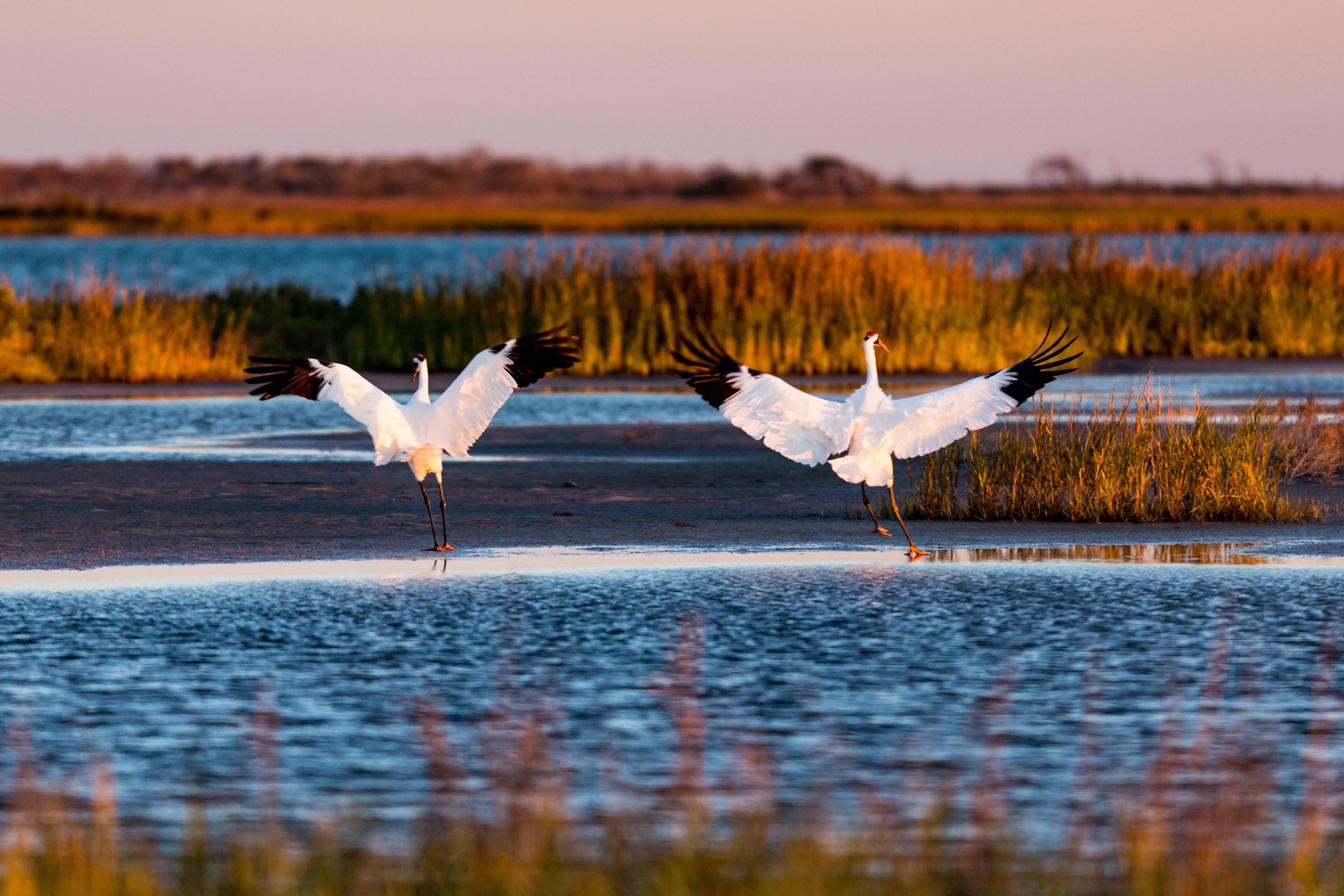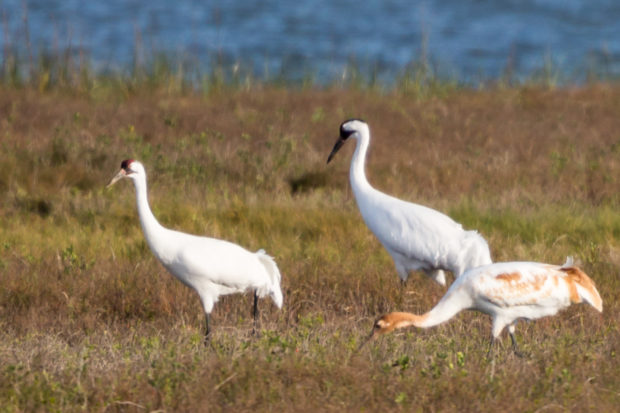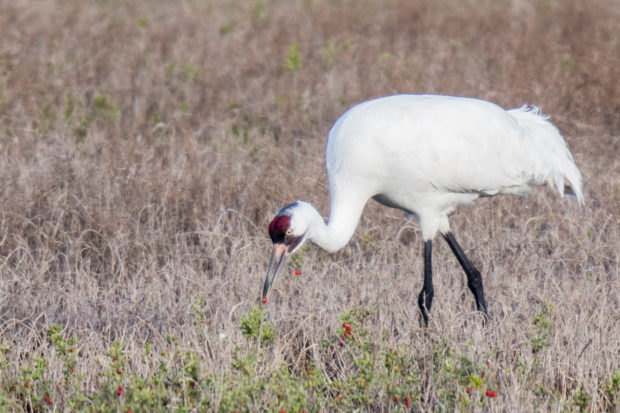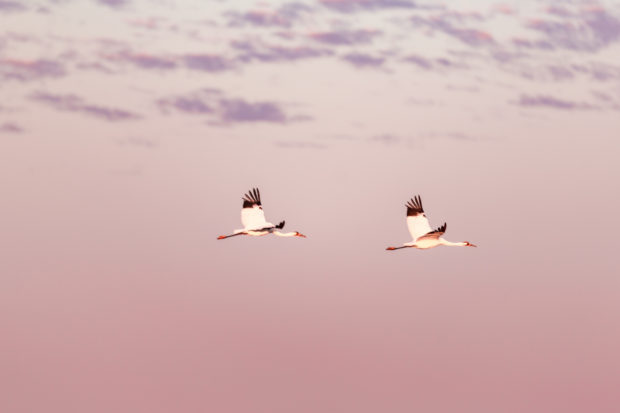We have much more to do and your continued support is needed now more than ever.
A Wild Year for the Whooping Crane

The whooping crane is one of North America’s most majestic birds. Standing five feet tall, with a seven-foot wingspan, the bird’s snow white plumage, black legs, and red spot on its head make it unmistakable.
The whooping crane is also one of the nation’s most famous comeback stories. As many as 20,000 whooping cranes were once found throughout North America. But by 1941, habitat loss and unregulated hunting—in part for the birds’ plumage—had reduced the whooping crane’s numbers to less than two dozen individuals in the wild.
Despite the strong upward trend in recent years, whooping cranes as a species remain at very real risk of extinction and several events in the past year highlighted the ongoing risks to whooping cranes’ continued recovery.
First, Some Good News
Last summer, a new record of 98 whooping crane nests were observed in the crane’s summer home of Wood Buffalo National Park, Canada. This blows away the previous record of 82 nests in 2014.
This year’s breeding success is part of a larger trend. Over the past seven decades, the whooping crane has made a considerable comeback. “Whooper” numbers are now higher than they’ve been in decades, with roughly 600 birds in total. Approximately 400 of those are part of the last truly wild flock, which migrates between Texas and Canada. The remainder are split between the three re-introduced (but not yet fully self-sustaining) flocks and birds raised in captivity.

Hurricane Harvey’s Lingering Impacts
The heart of Hurricane Harvey passed over Aransas National Wildlife Refuge—the winter home of the wild flock of whooping cranes. The hurricane destroyed at least ten buildings on the refuge, including the visitor’s center, while the storm surge eroded between five and twenty feet of shoreline. The record-breaking rainfall dispersed invasive species like water hyacinth and giant salvinia—potentially causing long-term changes to the habitat the cranes depend on.
It is not yet known if or how the lingering impacts from the hurricane will affect the whooping cranes’ habitats. The cranes feed largely on blue crabs while in Texas for the winter and blue crabs typically do best with a healthy mix of salt and fresh water. Refuge staff will be closely monitoring the cranes over the winter—but crane watchers are cautiously optimistic that blue crabs might be able to weather the bay’s temporary inundation with fresh water from the floods that followed the hurricane.

Whooping Crane Breeding Program Eliminated
For more than 50 years, the Patuxent Wildlife Research Center in Maryland raised whooping cranes in captivity with the ultimate goal of increasing the birds’ numbers and releasing juveniles into the wild when possible. Patuxent’s whooping crane program began with just 12 eggs in 1967 and ultimately grew to more than 60 adult whooping cranes. Patuxent’s biologists and dedicated volunteers successfully raised more than 30 chicks each year—all on a budget of just $1.5 million or so.
Sadly, the whooping crane breeding program at Patuxent has been eliminated, because of a Trump Administration decision to stop funding the program. The remaining captive cranes will be sent to other facilities.
Global warming affecting migration patterns
Scientific research published this year confirms what many whooping cranes watchers have long suspected—the birds are migrating north earlier in the spring, and heading south later in the fall, in response to the effects of climate change.
The changes in the timing of migration appear to be associated with warming temperatures, particularly in the spring. The shift is not subtle either—the cranes are migrating as much as 22 days later in the fall, and 21 days earlier in the spring.
It’s unclear what impact this change will have on whooping crane populations. Ornithologists are concerned that migrating through the Midwestern states in March and November – as opposed to April and October—could leave the birds more vulnerable to being exposed to snowstorms.

Take Action For All Wildlife
Few species are as close to extinction as the whooping crane once was, but scientists believe that as many as one-third of American wildlife species are in decline or at increased risk. A new bipartisan bill called the Recovering America’s Wildlife Act would fund state-led efforts on behalf of these wildlife. Tell your representatives in Congress to get behind this ground-breaking bill!





















